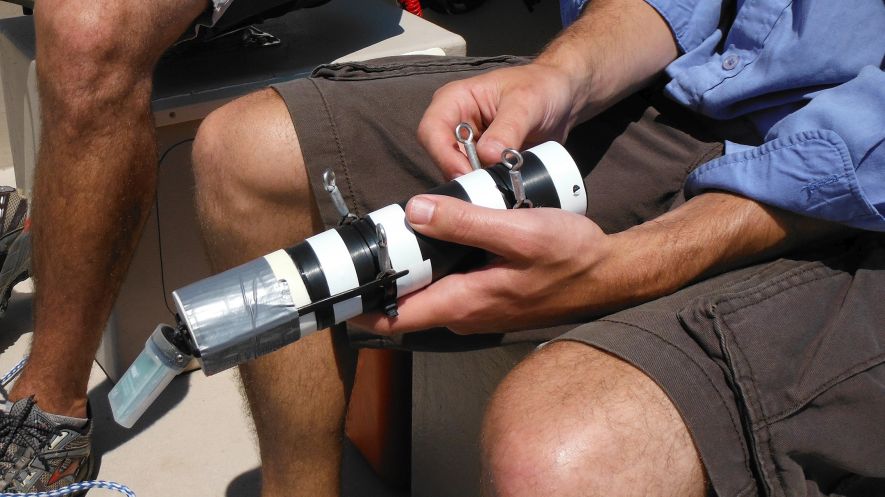A research team from Canada’s Acadia University are tracking Atlantic sturgeon by utilizing internal transmitters. The Atlantic sturgeon is listed as a threatened species in the Maritimes, but there are two known spawning rivers in Canada — the St. John River in New Brunswick and the St. Lawrence River.
“In 2012, the National Oceanic and Atmospheric Administration listed four populations as endangered and one as threatened in the United States,” said Montana McLean, a graduate student researcher at Acadia.
Internal transmitter tags placed in the sturgeon send out pulsed signals such as individual identification codes, registering data like water depth and temperature.
“These data are picked up by listening devices placed in the inter-tidal zone around Minas Basin to map movement over the course of the summer,” McLean said.
Researchers, focusing on the Kingsport Beach area, found the Atlantic sturgeon moving in at high tide to feed. McLean said tagged fish make distinct patterns when they enter tidal zones.
“They seem to root through the mud with their mouth, sucking up sediment, straining out their food and blowing the sediment out their gills.”
The sturgeon is slow growing but can reach 3.2 meters in length and up to 60 years old. They migrate into the Minas Basin area every summer and feed on invertebrates.
DNA samples, done by researchers in the United States in collaboration with Mike Dadswell, also an Acadia researcher, indicated that 60% of the sturgeon were from the St. John River, 35% from Maine and one or two per cent from the Hudson River in New York state.
“We wanted to find some baseline biological data on the summer aggregation on Atlantic sturgeon in Minas Basin,” McLean said.
“If a tidal turbine was to be put in place in the Minas Passage, we would need to have comparative data in order to do impact studies.”
The Acadia group’s research continues. They are also looking at long-term migratory patterns for the sturgeon.
Last summer, satellite archival tags, attached externally, were placed on several sturgeon. These tags come off after about 250 days and begin to transmit information to a satellite system.
“Hopefully, we’ll get some overwintering information that will help determine when they leave the Minas Basin,” McLean said.
“We think the Minas Basin is primarily a summer feeding area.”
Michael Stokesbury, a Canada Research Chair in Ecology of Coastal Environments at Acadia, has been working with Ocean Sonics, developers of hydrophones for listening to noise underwater.
Stokesbury and his team are examining ways to use the data on large animals to get to know what they hear underwater. In the future, this application could include using animals to map the noise profile in the Minas Passage before the deployment of turbines.
“We tried it on the Atlantic sturgeon this summer, and we’ll do a before and after comparison,” McLean said.
Referring to Ocean Sonics hydrophones, he said, “It’s fascinating technology.”
This news brief is an edited and truncated version of an original article appearing the Herald News, written by Glen Parker.
You can read the original article here.





